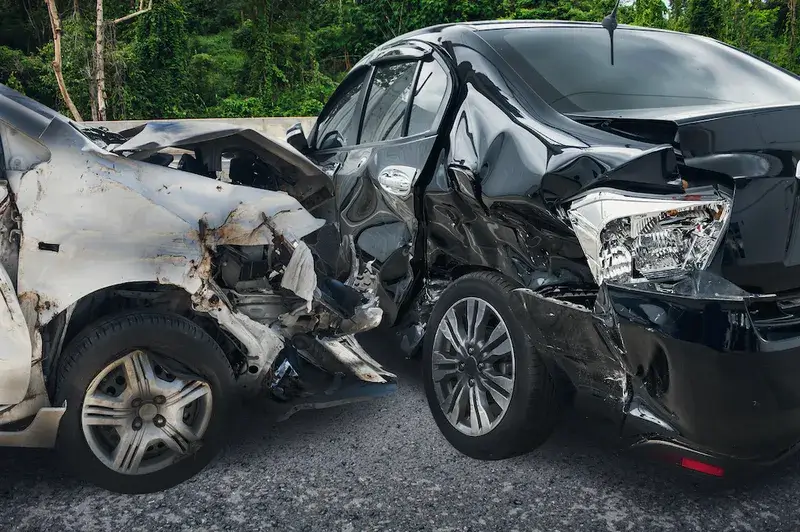Filing an insurance claim after experiencing a car accident can be a daunting task, especially if you're unfamiliar with the process. The aftermath of an accident is often chaotic, filled with emotions and uncertainty. If you find yourself in this situation in El Dorado Hills, California, don't worry—we're here to guide you through every step of the claims process.
Understanding the Basics: What is an Insurance Claim?
Before diving into the specifics of filing a claim after a car accident in El Dorado Hills, let’s clarify what an insurance claim is. An insurance claim is a formal request made by the policyholder to their insurance company for compensation or coverage for damages incurred during an incident—like a car accident.
Types of Insurance Claims
Property Damage Claims: These cover damages to your vehicle or other property affected by the accident. Bodily Injury Claims: If someone gets injured due to the accident, this covers medical expenses and related costs. Uninsured/Underinsured Motorist Claims: This applies if the other driver lacks sufficient insurance to cover your damages.Why Is Filing an Insurance Claim Important?
Filing a claim is crucial because it helps you recover financially from losses stemming from accidents. Whether it's repairs for your vehicle or medical bills, proper documentation and submission can make all the difference.

How to File an Insurance Claim After a Car Accident in El Dorado Hills
Now that we've covered some basics, let’s explore how to file that all-important insurance claim after your car accident in El Dorado Hills.
Step 1: Ensure Safety First
Immediately following any car accident, safety should be your top priority.
- Check yourself and passengers for injuries. If anyone needs immediate medical assistance, call 911. Move vehicles out of traffic if possible and safe to do so.
Step 2: Gather Information at the Scene
Collecting information at the scene helps build your case later:
- Take photos of damage and surroundings. Exchange details with involved parties (insurance info, license plates). Gather witness contact information.
Step 3: Notify Your Insurance Company
Once you're safe and have collected relevant data:
- Contact your insurer as soon as possible. Provide them with all gathered evidence and details about the incident.
Your insurer may ask specific questions regarding how the accident occurred, so be prepared.
Step 4: Document Everything
Documentation is key when filing your claim. Keep records of:
- Medical reports or bills Repair estimates for your vehicle Any correspondence with your insurance provider
Step 5: Understand Your Policy Coverage
Take time to review your insurance policy:
- What does it cover? Are there deductibles?
Understanding these nuances can help inform you about what compensation you can expect.
Step 6: Follow Up Regularly
Don’t just file and forget! Regular follow-ups with car accident legal advice your insurer ensure that everything progresses smoothly.
What Happens Next? The Claims Process Explained
Once you've submitted your claim, here's what typically happens next.
Claims Adjuster Assignment
After filing, a claims adjuster will be assigned to assess the situation. They investigate details from both sides involved in the accident—their job is to determine liability and compensation amounts.
What Does a Claims Adjuster Do?
Review police reports. Inspect vehicles involved. Evaluate medical bills and treatment plans.Negotiating Your Settlement Offer
Once assessments are complete, you'll receive a settlement offer:
Evaluate if it adequately covers damages or losses incurred. Negotiate further if necessary—don’t hesitate!Common Mistakes When Filing an Insurance Claim
While navigating this process can be tricky, avoiding common pitfalls can save you time and headaches.
Mistake #1: Delaying Notification
Failing to notify your insurer promptly could lead to complications down the road—insurance policies often have strict timelines for reporting accidents.
Mistake #2: Not Documenting Evidence Properly
Inadequate documentation can weaken your case when negotiating settlements; ensure that you have all necessary evidence compiled neatly.
Mistake #3: Accepting Initial Offers Without Consideration
Always evaluate initial settlement offers critically—they might not always cover all expenses associated with the accident!
FAQs About Filing an Insurance Claim After a Car Accident in El Dorado Hills
Here are six frequently asked questions (and answers) about filing claims after accidents:
1. How soon should I file my insurance claim?
You should notify your insurer as soon as possible—ideally within 24 hours post-accident—to avoid complications later on.
2. What if I’m not liable for the accident?
Even if you’re not at fault, it’s still essential to file a claim; gather proof showing liability lies elsewhere for effective processing.
3. Can I use my own auto repair shop?
Yes! You have rights regarding where repairs are conducted—ensure you communicate this clearly with your insurer during negotiations.
4. How long will it take to resolve my claim?
Resolution times vary based on cases; however, most straightforward claims may take anywhere from weeks up to several months depending on circumstances involved.
5. Will my premiums increase after filing a claim?
They might! Depending on jurisdiction laws and individual policy terms; consult with your agent regarding potential impacts beforehand!
6. Should I hire an attorney during this process?
If disputes arise or settlements seem unfairly low consider consulting legal counsel familiarized within auto accidents—it could improve chances significantly!
Conclusion: Navigating Your Way Forward After an Accident
Filing an insurance claim after experiencing a car crash in El Dorado Hills may feel overwhelming initially—but by following these tips laid out above step-by-step along with thorough preparation ensures smooth sailing ahead! Remember always prioritize safety first while documenting everything accurately throughout each stage until resolution comes through successfully!
By familiarizing yourself properly about how best approach handling such situations now saves future stress later down line—so don’t hesitate dive right into those procedures today knowing help awaits whenever needed!